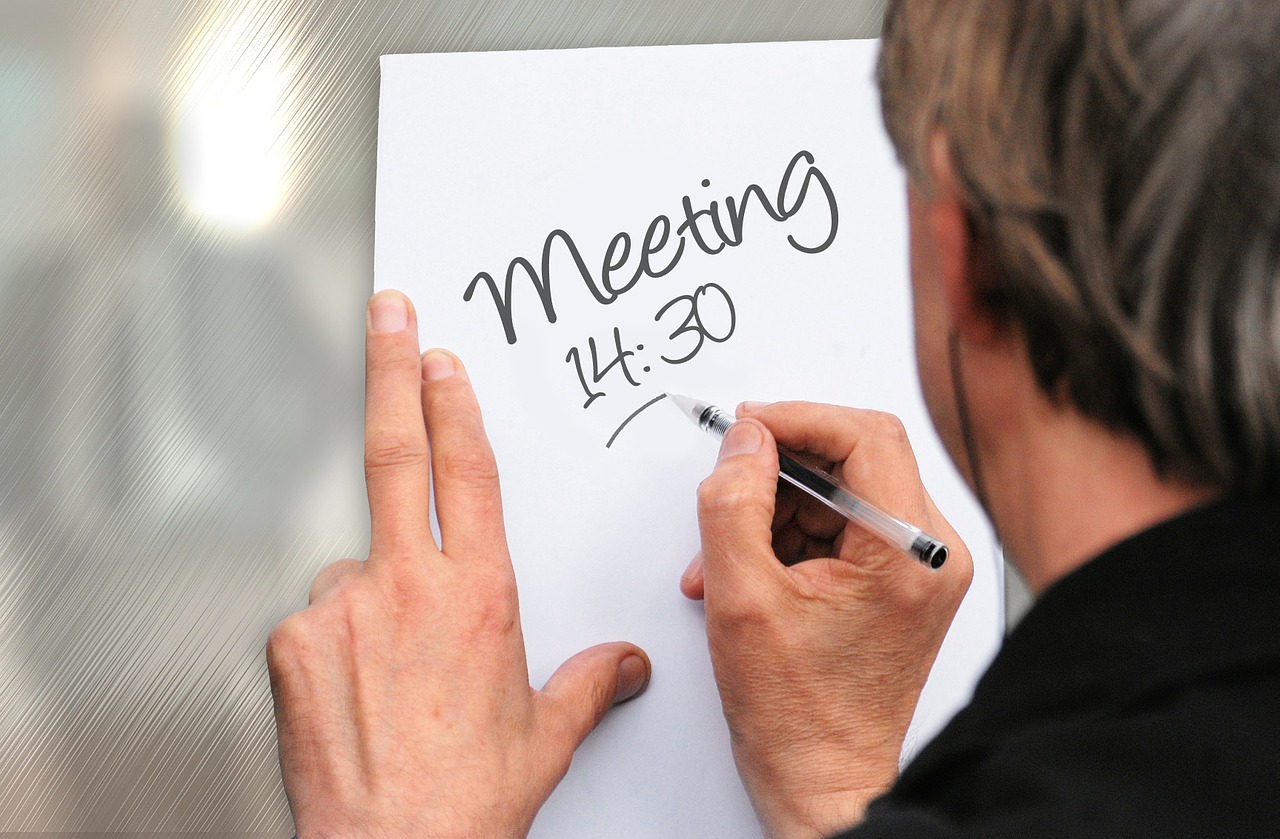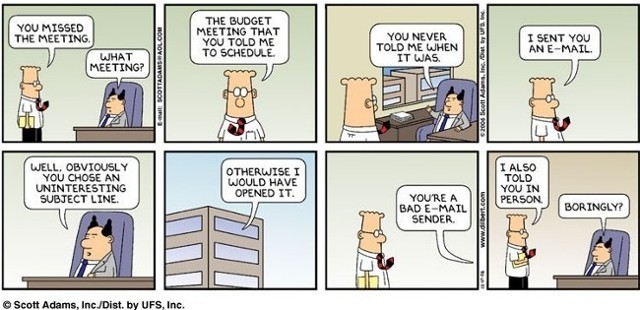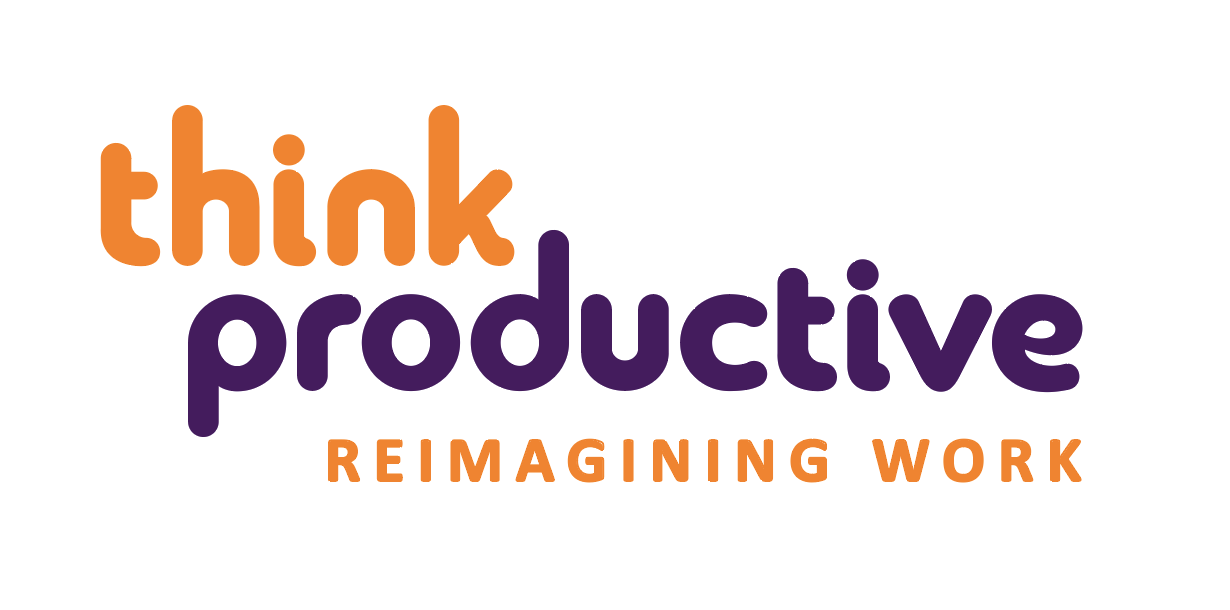It’s Wednesday morning. You’ve just arrived to work and the clock has struck 9 am — time for the daily team meeting. If your first instinct is groaning or instant displeasure, you are not alone. A survey by Clarizen shows that 46% of people who attend meetings would rather be somewhere else. Think that’s bad? 17% of people in the same survey said they would rather watch paint dry than be in a meeting! Is it a lack of meetings skills or is it something else that’s overshadowing meetings?
Meetings have always had a bad image. In fact, it’s hard to find a movie or TV show with characters who actually enjoy meetings. The comic strip “Dilbert” and the film “Office Space” have played up the image of the boring, mundane business meeting. Many people who see these shows and movies can sadly relate to the events they see on the screen. So is there a way to make these horridly boring meetings better? Yes. Yes there is.
The typical meeting doesn’t have to be a snooze fest. Conversely, it can be one of the highlights of the day. But how? Let’s start by changing up the routine of the meeting: standing instead of sitting.

Stand Up
It may seem counter-intuitive, but this is definitely a game changer. Mainly, standing up during a meeting increases the focus of the participants. Have you ever sat at a meeting, only to have topics pop up left and right that have nothing to do with the meeting in question? You’re here to talk about the fiscal responsibilities of your business, not who you think is going to die in the next episode of “Game of Thrones.”
When everyone meets standing up, the attendees won’t have as much banter. They have no comfortable chairs to sit in, so they want to get straight to the point. Topics of interest to the business will become much more viable since the participants won’t want to stand there all day and listen to someone ramble on. You’ll meet, say what needs to be said and leave.

Make Sure Everybody Contributes
A byproduct of the stand-up meeting, everybody contributing to your meeting makes the meeting better and more valuable. It’s easy for employees to sit in a chair and say nothing, twiddling their thumbs. They may even start to zone out and daydream about that cute waiter or who really framed Roger Rabbit.
By the end of the meeting, only two out of the 10 attendees actually contributed anything of value. The other eight weren’t listening. If you run a stand-up meeting, people are more likely to contribute. Why? Because they have no other choice. When you sit at a desk or conference table, it’s easy to shield yourself from the conversation.
The table acts as a barrier. Removing the barrier and placing everyone face to face makes it more difficult to hide. If you can’t conduct a stand-up meeting, then constantly asking questions to everyone at the meeting is the best alternative.

Be a Vulnerable Leader
All too often, people — particularly bosses or supervisors — think they need to be strong 100% of the time. In their eyes, any instances of the unknown are unacceptable. This mode of thinking leads to separation between boss and employee. If the boss doesn’t have any weaknesses or vulnerabilities, how can the employee make a connection with them? The answer is they can’t.
Being a vulnerable leader means it’s OK to not know everything. Humans don’t know everything, and it’s perfectly acceptable to not have all the answers.When asked a question you don’t have the answer to, answering with an “I don’t know” or “Maybe” is fine. When employees see their bosses as human, they will have a better working relationship.
Stick to the Agenda
Ever been at a meeting where 1,001 topics were discussed? Originally, the meeting was supposed to focus on the profit margin of the sales department. Instead, the meeting covered human resources and their progress on implementing new rules. Oh and then the IT department talked about their changes to the building. And to top it all off, the sales departments from other companies. What was originally going to be a 15-minute meeting has now turned into an hour-long gabfest.
To make meetings effective, stick to the game plan of what you’re supposed to talk about. If the meeting focuses on your sales department and improving your numbers, focus on that. Nothing else matters. When you have a plan already set up, it makes the meeting go much smoother. Plus, you’ll end up having happier — and more productive — employees.

Have Meetings at Regular Intervals
Habit. Habit. Habit. As humans, we love habits and routines. They make us feel comfortable. We get a warm, cozy feeling inside when we watch our favorite movie again and again. When tragedy strikes in our lives, sticking to routines helps us keep our sanity. Having meetings at the same time every day is no different.
When you meet at the same interval every day, you help mold a routine. People begin learning what to expect and what will be expected of them. Surprises will only disrupt the workflow. Also, if the employee knows the daily meeting is happening at 4 pm, they will plan ahead if they need to say anything or bring up a certain topic. It helps prepare both the employee and the boss for a productive and engaging meeting.
Don’t Try to Please Everyone
In life, it’s impossible to please everyone. This mindset should also be present when leading meetings in the workplace. You may say something that upsets one team member. They may get mad at you for a day. A week. You didn’t mean it personally, but they may take it that way. This is natural.
Not everyone is going to agree with all your decisions. However, that doesn’t mean you’re making the wrong ones. Accept the fact that you can’t be everyone’s friend 24/7. Understanding this principle allows you to focus on what you need to say in meetings without skirting around sore subjects.
Overall, leading team meetings can be an uplifting experience. You can grab employees’ attention and inspire them to do better. Try one of these tips the next time you lead a meeting — you’ll be pleasantly surprised with the results.

Are you ready to transform your meetings and make your meetings magic? Not sure where to start? Maybe it’s time to tackle those meeting skills of yours or maybe you just need to get in touch and we can get to the bottom of your productivity and meeting challenges.
By Lexie Lu
Lexie Lu is a freelance designer and blogger. She enjoys researching the latest trends and always has a cup of coffee in close proximity. She manages Design Roast and can be followed on Twitter @lexieludesigner.
